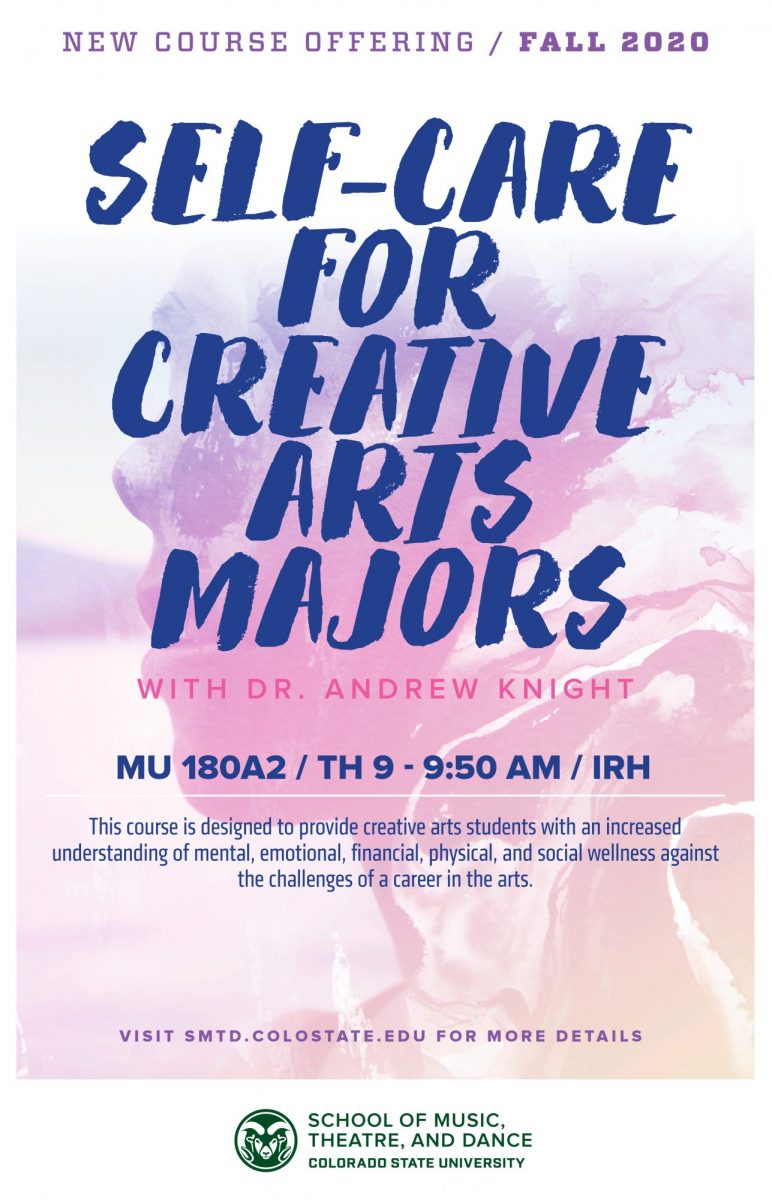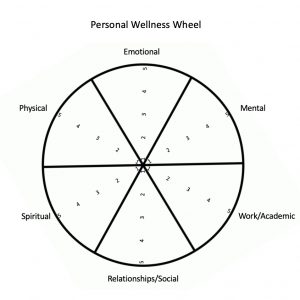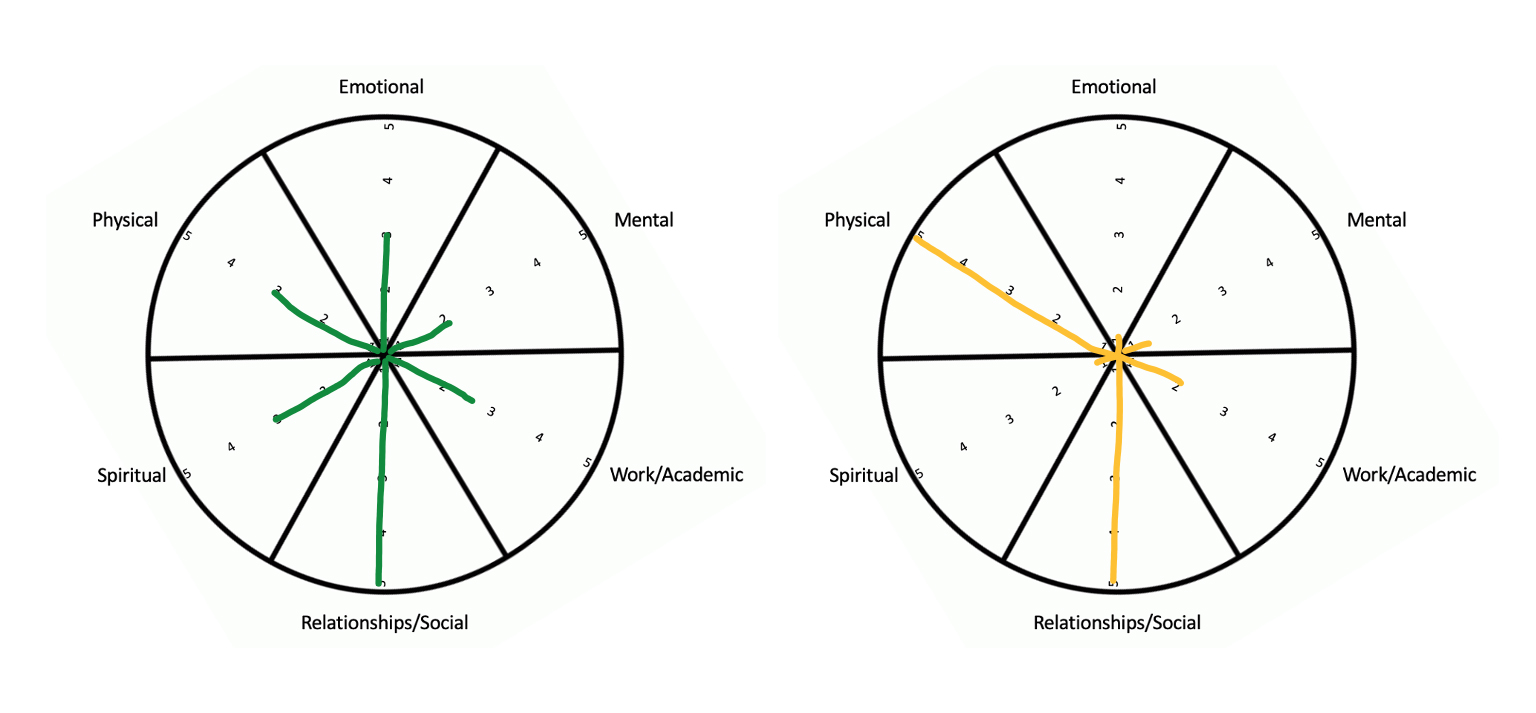Working in the arts is fulfilling, yet often quite strenuous. Images of the starving artist are romanticized and synonymous with paying one’s dues. Performing artists, who so proficiently and creatively give of themselves, often struggle to prioritize themselves, resulting in burnout among students and young professionals alike.
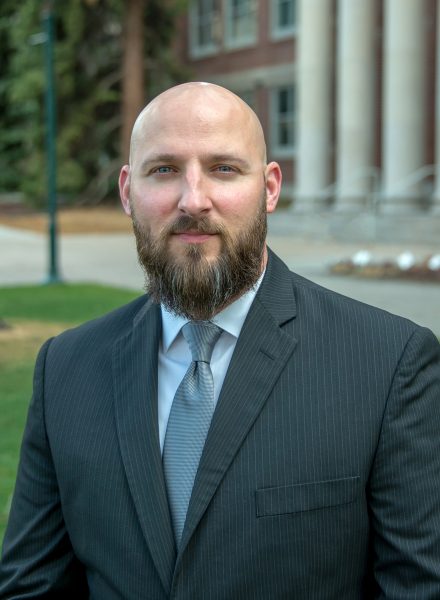
Faculty in the School of Music, Theatre, and Dance, who have experience navigating these challenges, are concerned about how well student artists take care of their mental, emotional, physical, social, and financial well-being. "Students come to CSU to study the creative arts because of their passion for what they do, and they want to make a profession of it," explained Dr. Andrew Knight, associate professor of music therapy at Colorado State University. "That passion can be challenged over the course of a grueling program of study."
“When you want to hear the applause at the end of the night, you’ll sacrifice more—you may put up with a lot more stress points.”
Implicit messages about the business—that it’s a dog-eat-dog endeavor—are wide-spread and deeply internalized. “There are people who struggle in other industries but probably are not being repeatedly told by their superiors that there are a million others in line for a chance at their job,” explained Knight. “When you want to hear the applause at the end of the night, you’ll sacrifice more—you may put up with a lot more stress points.”
This is particularly true for young artists without the experience to process criticism and failure in a healthy manner.
Addressing the vast array of possible solutions
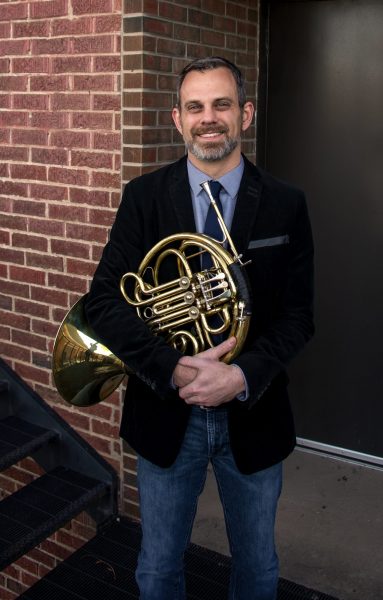
“It’s a broad generalization, but we tend to see people who are very emotionally invested in their work, and what they do is very personal,” said Dr. John McGuire, associate professor of music, and brass area coordinator at CSU. “For example, when I have a bad performance, it affects me on a personal and emotional level to the extent that it stays with me for a while.”
Junior theatre performance major, Charlotte Williamson, already recognizes the intense expectations. “As a student in the arts there is pressure to be the best and do the next best thing. ...Mental and physical wellness are not put as the priorities they should be when it comes to making good art,” Williamson said.
McGuire says that attention to health in the performing arts is shifting but knows these are hard lessons for everyone to learn. “Black and white solutions to the issue of burnout and wellness, with a few exceptions, don’t exist,” he said. “I work with students, week in and week out, and see them at their best and at their worst for any variety of reasons. I can’t insert myself into their lives, but as a teacher, I can impart the tools they need to start helping themselves. That is what this is about.”
In 2019, McGuire attended the National Association of Schools of Music conference, specifically student wellness sessions. “They talked about there being a real crisis with college-age student wellness, particularly in the performing arts.”
He was compelled to take action and immediately created a wellness masterclass series. Utilizing experts and presentations already offered by the CSU Health Center, McGuire invited mental health, therapy, nutrition, and finance experts to speak to his brass players.
This masterclass became a model for a one-credit experimental course. MU 180A2 Self-care for Creative Arts Majors, taught by Dr. Knight, was designed to provide creative arts students with an increased understanding of the five dimensions of mental, emotional, physical, social, and financial wellness against the challenges of a career in the creative arts. The School of Music, Theatre, and Dance is dedicated to helping students define and communicate their tolerance levels, while providing practical self-care tools within the five dimensions.
The course has helped freshman Kia Young identify where that threshold begins. “The course load [in music education] is a lot, and you’re expected to achieve a lot,” she explained. “I’ve had to re-evaluate my game plan, and learn to prioritize, reach out for help, and lay the foundations for my self-care regimen.”

Pre-emptive measures
The course curriculum includes texts by Brené Brown (The Gifts of Imperfection: Let Go of Who You Think You’re Supposed to Be and Embrace Who You Are) and Rosamund and Benjamin Zander (The Art of Possibility: Transforming Professional and Personal Life).
“Vulnerability, compassion, and gratitude, the elements of basic humanity, are the trifecta for easing burnout,” Knight believes. “I already tell my music therapy students that they have to practice vulnerability, compassion, and empathy toward clients. The unique need for performing arts majors is that we’re turning this idea around on ourselves.”
“For example, if your dance partner sprains an ankle, you would say, ‘It’s fine, let me help you out, let me bring you books and soup,’ but we don’t tend to be as gentle on ourselves. All this creativity and compassion that you’re giving out to the world, can you also give to yourself?”
For McGuire, it’s less about a concrete list of answers and more about “helping students understand that there are things that work, and here are some of them.” While an alternate solution might also be appropriate, it’s about developing the mindset that there is a unique solution no matter the problem.
“I already tell my music therapy students that they have to practice vulnerability, compassion, and empathy toward clients. The unique need for performing arts majors is that we’re turning this idea around on ourselves.”
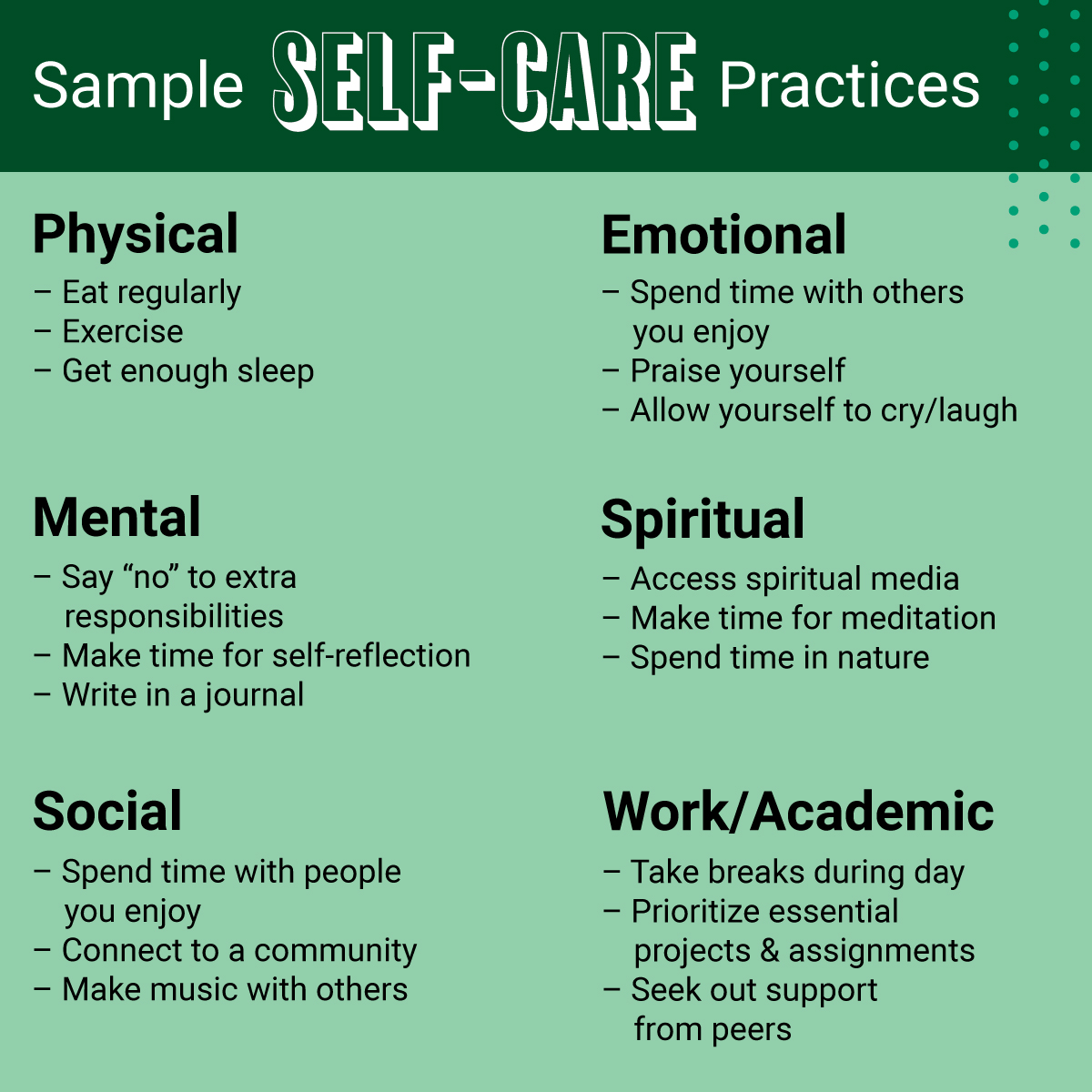
In their words
“It is all cumulative,” said McGuire about work, practice, and performances that are seven days a week during the run of a show. “What do you do when you don’t get the weekend off to recharge your batteries?”
Williamson and junior theatre major, Lauren Boesch, have opened up about how the self-care course is empowering them to recognize and improve their wellness, especially in the areas of mental, emotional, and physical strain.
“We exchange coping mechanisms, mindfulness meditations, and podcasts, and engage in creative discussions about where mental and physical wellness may or may not fit into the world of arts, particularly as an arts student,” said Williamson.
“This class is making me think about and take my health seriously in a way that I never had before,” said Boesch, whose concentration is theatre design and technology. “As a stage manager, I often push aside my own personal needs to fulfill the needs of a production. I end up so caught up with what's happening in front of me that I'm ignoring my own health. As anyone knows, this ends up catching up to you, and I often find myself really sick.”
Developing a culture of wellness
More than 20 performing arts majors enrolled in the course this fall. “The School of Music, Theatre, and Dance doesn’t want a token, one-credit elective but is striving for something bigger,” said Knight, who wants students to know that at CSU, they can be part of a growing culture of wellness that has a lasting effect.
Boesch has already internalized the circuity of vulnerability, compassion, and gratitude. “I've learned a lot about the fact that we have an impact on the direction that performing arts can take,” she noted. “As we enter the workforce and positions of leadership, we are able to influence the way that we focus on our health as well as make decisions that can impact other people's wellbeing. When we choose to lead with compassion and open the space for others to do the same, we ultimately help set others around us up for success as well.”
Williamson concurs, saying, “As a future teacher I wish to engage with my students in ways that teach self-care and wellness early on in their arts careers, and to give them the tools I have only just begun using.”
The issues around performing artist’s health and wellness is a wicked problem that may always be with us, but preparing students to pre-empt issues through self-care, and pass that knowledge on as performers and teachers, is as close to a conclusion as Knight and McGuire could hope for.
Wellness Wheel Exercise
Dr. Lindsey Wilhelm, assistant professor of music therapy recently gave a guest lecture about a Personal Wellness Wheel concept to the MU 180 Self-care class. The idea for the wheel exercise came from work in psychology concerned with a wellness wheel used to examine optimal health and wellbeing. A similar idea has also been applied to self-care.
Dr. Wilhelm adapted the wheel visuals to an exercise designed to help music therapy students examine the balance of their self-care practices. On a scale of 1 (few/minimal) - 5 (many/often), students rate the self-care practices they use across six main areas. The numbers are then connected to look at balance across six areas: emotional, mental, work/academic, relationships/social, spiritual, and physical.
“Once we have an idea of the emphasis of self-care practices in each area, and have looked at our own personal values related to each area (e.g. some areas are not as important or valued across individuals), I challenge the student to identify specific practices that are working well for them, and invite them to identify new practices they could try incorporating into their ongoing self-care plan,” described Wilhelm.
Dr. Wilhelm’s guest lecture particularly stood out to Kia Young. “It made me redefine and rewrite my entire definition of self-care,” Young said. “While I understood that self-care didn’t align with its commercialized concept of bubble baths and chocolate, self-care was this gray area of doing things I enjoy, as well as the things I need to do to help balance [the dimensions of] my health.”
For more on the origin and use of wellness and self-care wheels, reference A Look At The Self-Care Wheel: Templates, Worksheets and Activities.

